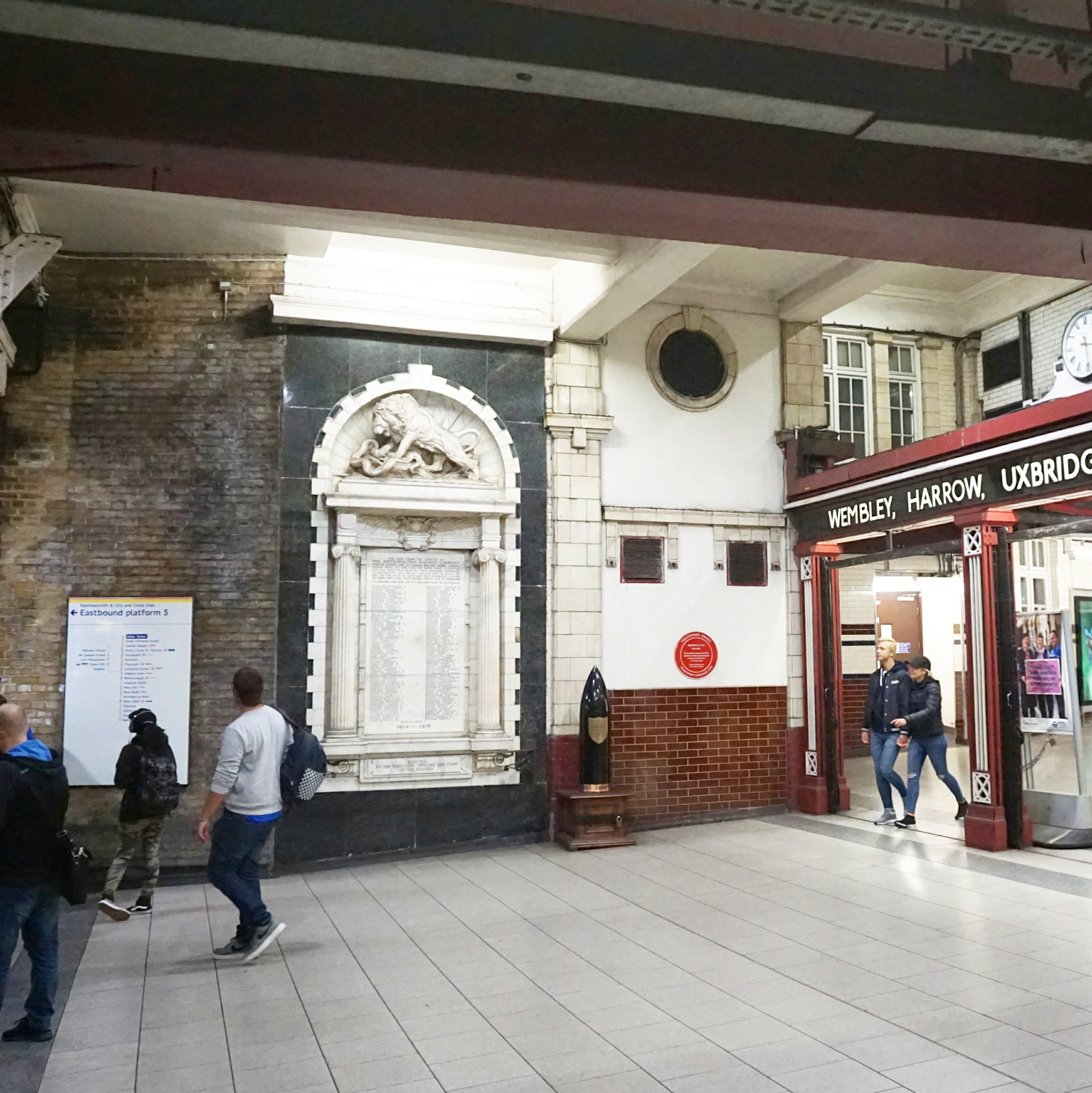Erection date: 28/6/2016
Metropolitan Railway
The world's first underground railway opened from Paddington to Farringdon via Baker Street Station on 10th January 1863.
For further information visit www.transportheritage.com
Transport Trust - Transport Heritage Site
Site: Baker Street war memorial (2 memorials)
NW1, Baker Street Station
This site can be found at the east bound Circle Line platform. To the right of the monument there is an unusual charity collecting box made of a war-time shell. There is a slot for coins in the top and a brass shield on the front, inscribed: "12 inch high explosive shell, presented by Messrs Vicers Ltd, Barrrow Works. Donations to the Railway Benevolent Institution for Disabled & Distressed Railwaymen, Widows & Orphans."
We thank our colleague Alan Patient for spotting the red plaque in 2018 and sending us the photos. Note that, prior to the arrival of this plaque, the white wall used to be terracotta tiles but was presumably painted so that the red plaque would stand out.













Comments are provided by Facebook, please ensure you are signed in here to see them